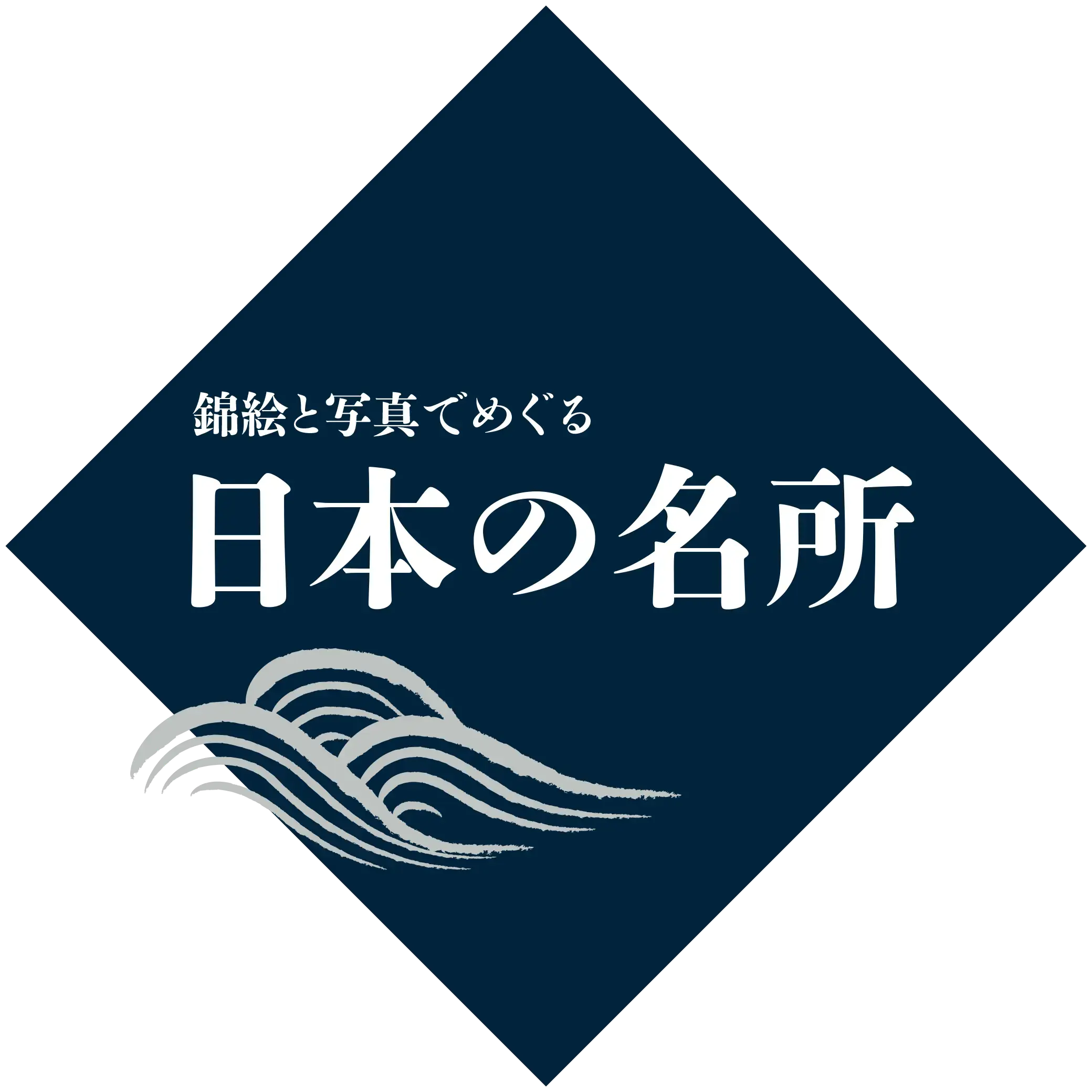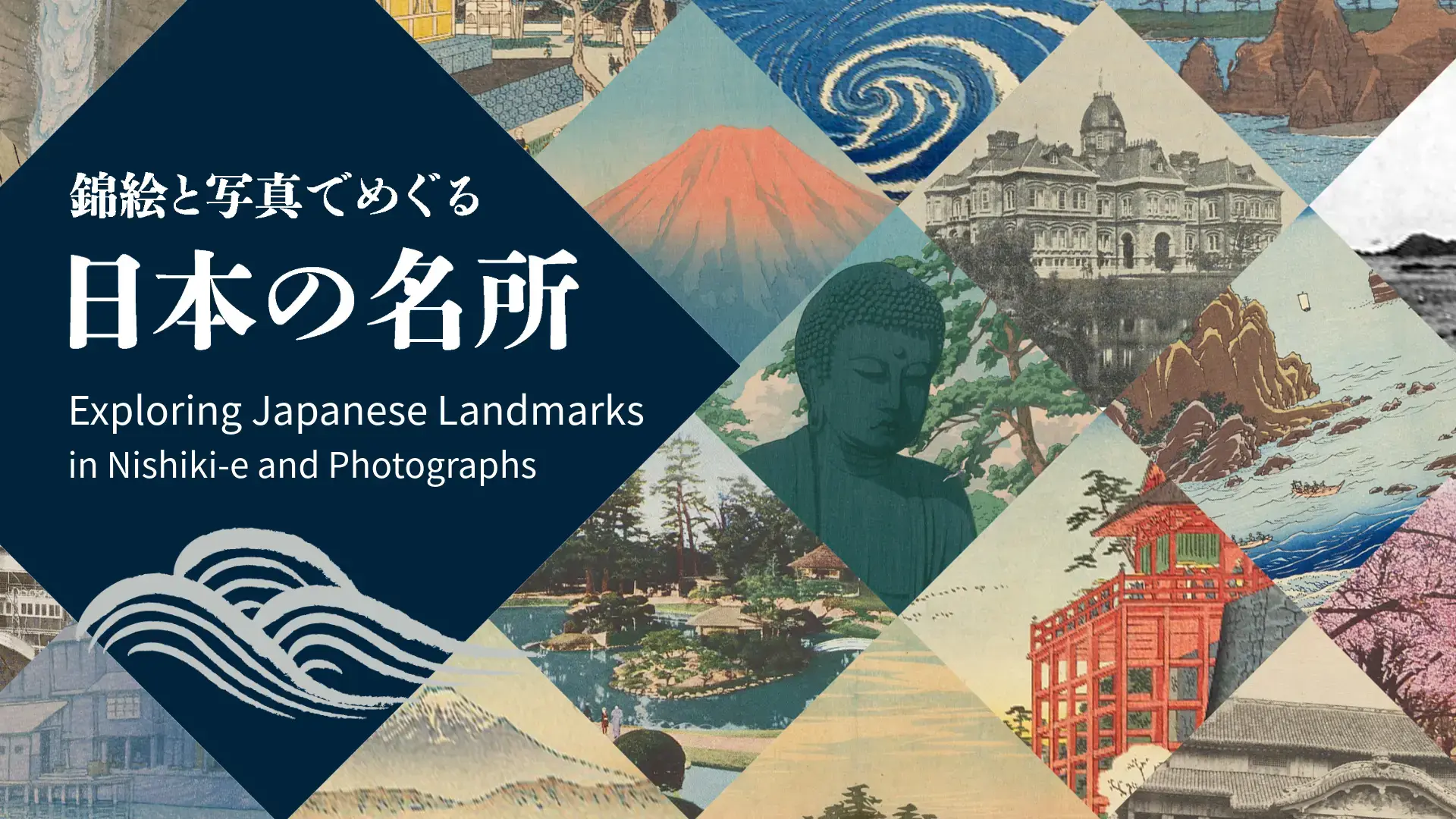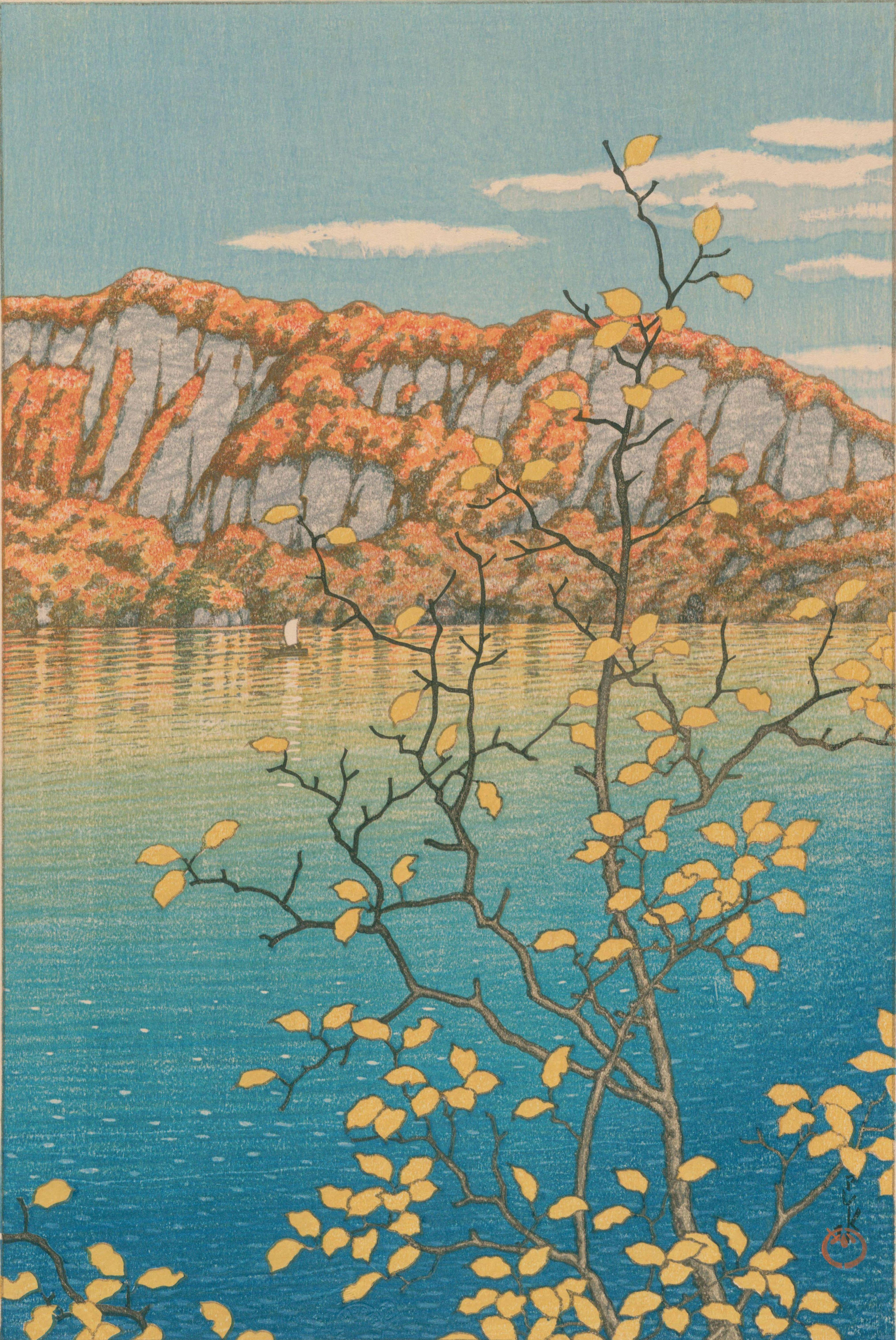
八郎潟
このコラムは、平成28年に電子展示会「写真の中の明治・大正(東北編)」の中で公開したコラムを移行したものです。内容は当時の記載内容に基づきます。
八郎潟は、かつて琵琶湖に次いで日本第2位の面積(約22,000ha)を誇る広大な湖だった。海水と淡水が混ざった汽水湖で、水深は3~5mと浅い。写真には干拓以前の姿が残されていて、遠方に船がまばらに見えるとおり、漁業が盛んだった。夏は打瀬(うたせ)網(底引網の一種)を引く白い帆の舟、冬は氷下漁業の風景が広がり、獲ったワカサギ等による佃煮加工も行われた。
八郎潟の伝説
「八郎潟」の名は八郎太郎の物語に由来する。
八郎太郎は鹿角(かづの)の里(現在の鹿角市)に生まれた。ある日、八郎太郎は仲間とともに3人で十和田の山奥に入っていった。仲間が出掛けている間に、イワナを3匹捕まえ焼いていたところ、お腹が空いて堪らなくなったため、自分の分だけでは足りず、仲間の分も含めて3匹全部食べてしまった。
すると、喉が焼け付くようにヒリヒリし、水が欲しくて堪らなくなった。川で水を飲み続けるうちにどんどん姿が変わり、最後はなんと龍に変わってしまった。変わり果てた自分の姿に驚き嘆いたものの、もう里には戻れないことを悟り、仲間に別れを告げた。そして沢をせき止めて湖を作り、そこに住み始めた。これが十和田湖といわれる。
それから後、南祖坊という修行僧が十和田湖にやってきた。熊野(現在の和歌山県)で「草鞋の緒が切れたところを己の住む場所にせよ」とお告げを受けていた南祖坊は、ちょうど草鞋の緒が切れたので十和田湖に住もうと考えたが、すでに湖の主となっていた八郎太郎も譲らなかった。
激しい戦いの末に敗れた八郎太郎は、米代川を下り、ようやく天瀬川に流れ着いた後、八郎潟を作りそこを住処とした。
田沢湖案内
八郎太郎は後に田沢湖の辰子(八郎太郎と同じく人から龍になった娘)と結ばれ、冬は田沢湖で過ごすようになった。主のいない八郎潟は冬に凍るが、田沢湖は冬の間も凍らず、2匹の龍が住んだためどんどん深くなっていったと言われる(田沢湖は日本一深い湖で、水深約420m)。
八郎潟の干拓
冷害で米不足に悩むことの多いこの地域では、水深が浅い八郎潟を干拓する計画が江戸時代からあった。安政年間に渡部斧松(わたなべ おのまつ)の「八郎潟疎水計画」、明治5(1872)年に初代秋田県令島義勇(しま よしたけ)の「八郎潟開発計画」があり、その後も農商務省等で計画が作成された。だが技術的な問題に加え、莫大な資金がかかるため実施は見送られてきた。
しかし、戦後、食糧増産の目的で再び干拓計画が持ち上がる。この計画には耕作地の不足による農家の二、三男の失業問題の解決、さらに、干拓計画を通じてオランダとの国交改善につなげようとする吉田茂首相の強い意欲が背景にあったと言われている。
昭和29(1954)年3月、日本政府の要請でオランダからヤンセン教授(P.P.Jansen)とフォルカー技師(A.Volker)が来日。過去に日本人が練った計画をもとに干拓計画が作成され、32(1957)年に着工した。
当然、干拓計画には周辺住民、特に漁業関係者の反発が強かった。何度も補償交渉が行われた末に、漁業関係者への生業補償18億円余り、佃煮加工業者等への見舞金3,800万円弱が支払われた。また周辺住民への農地配分も行われた。
39(1964)年には八郎潟の干陸に大潟村が発足した。そして52(1977)年、着工から20年後に干拓事業は終了。総工費は852億円に上った。
干拓面積は八郎潟全体の約80%で、残りは調整池や承水路となった。
干拓後~現在
多大な労力と工費をかけて事業を進めたものの、その目的は当初からの変更を余儀なくされた。
昭和35(1960)年頃から日本経済の高度成長に伴い、工業分野で新たな雇用が発生。その結果、農家の二、三男の失業問題はなくなった。しかも、45(1970)年からは減反政策が実施され、大潟村でも水田単作経営から田畑複合経営への変換を求められた。
八郎潟の自然環境も大きく変化した。防潮水門が設置され、調整池は淡水化。灌漑用水は確保されたが、以前に生えていた藻類は消滅し、魚介類が減少した。反面、陸地が出現したことで周辺から植物が入り込んだり、鳥類が多様化するなど新たな生態系が作られている。
近年、調整池の水質汚染や農業をめぐる政策などの懸案に対し、大潟村・八郎潟周辺では様々な模索が続いている。
引用・参考文献
- 秋田県の歴史散歩編集委員会編『秋田県の歴史散歩』山川出版,2008 【Y77-J1340】
- 天野荘平『八郎潟と八郎太郎:八郎太郎信仰と伝説の地を訪ねて』秋田県立大学生物資源科学部生物環境科学科,2010 【GD33-J237】
- 石川次男『消えた八郎潟』嶋崎経済研究所出版局,1965 【748-I635k】
- 色川大吉ほか監修,田口勝一郎編『図説日本の歴史.5』河出書房新社,1987 【GB71-192】
- 「角川日本地名大辞典」編纂委員会編『角川日本地名大辞典.5(秋田県)』角川書店,1980 【GB11-38】
- 国史大辞典編集委員会編『国史大辞典.第11巻(にたーひ)』吉川弘文館,1990 【GB8-60】
- 小松田儀貞「八郎潟--「期待と回想」の間で」『秋田県立大学総合科学研究彙報』11号,2010 【Z71-D932】)
- 佐藤敦「八郎潟干拓の歴史」『沙漠研究』15巻3号,2005.12 【Z15-770】)
- 千葉源之助『田沢湖案内』宮本商店,大正2(1913)【82-766イ】
- 農林省構造改善局編『八郎潟新農村建設事業誌』農業土木学会,1977 【RB274-45】
- 八郎潟学術調査会編『八郎潟の研究.1965』秋田県教育委員会,1965 【291.24-H331h】
- 富民協会編『国土はこうして創られた:八郎潟干拓の記録』富民協会,1974 【DM165-73】
- 松谷みよ子『松谷みよ子の本.第9巻(伝説・神話)』講談社,1995 【Y9-1069】
- 『干拓後の八郎潟とその周辺地域の変容:秋田県郷土教育資料』秋田県教育センター,1989 【GC28-E15】
- 『八郎潟干拓事業誌』八郎潟干拓事務所,1969 【RB274-9】







